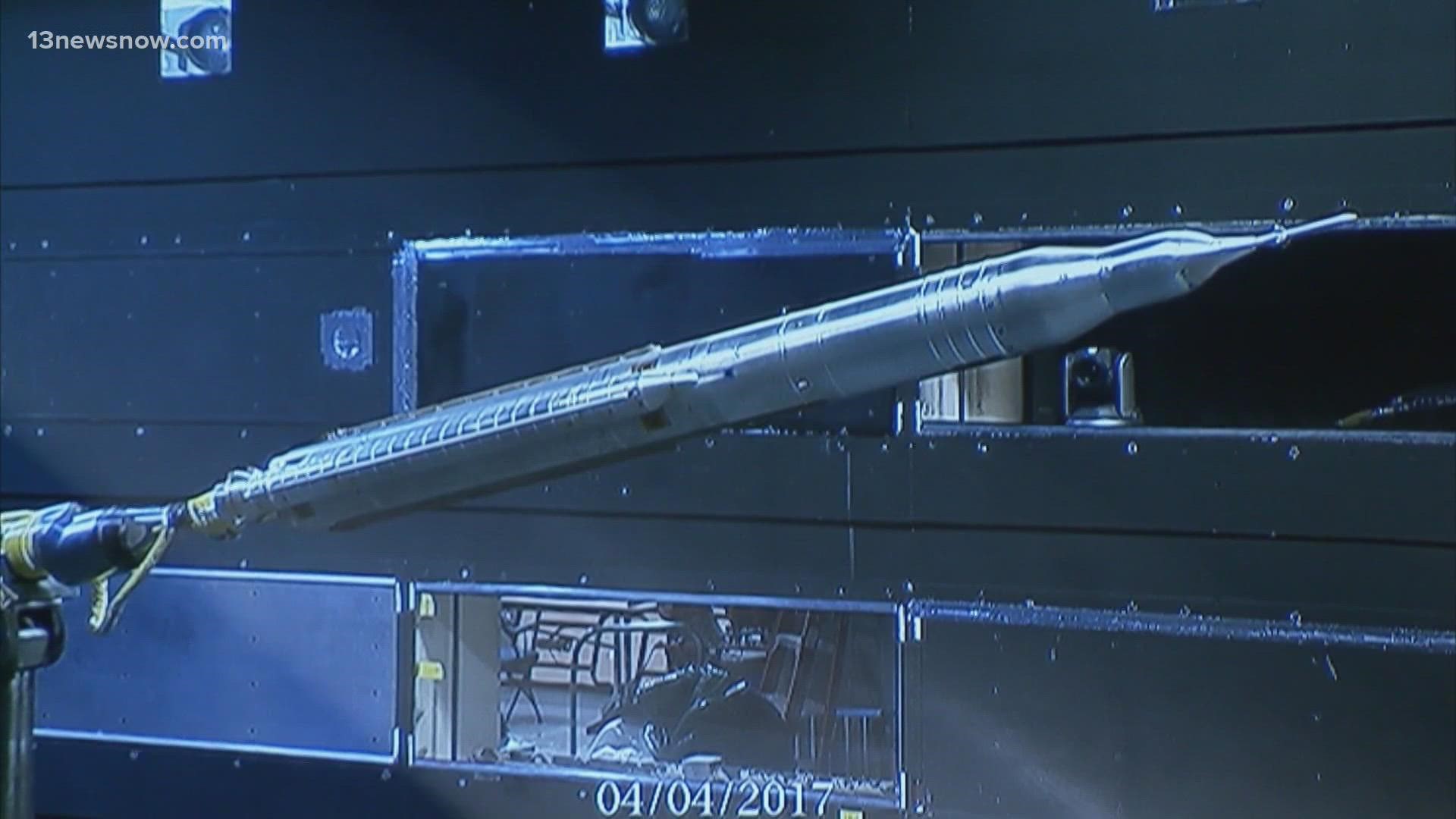HAMPTON, Va. — The first two minutes of a rocket's launch take nearly 10 years of preparation for engineers at NASA Langley Research Center in Hampton.
“It’s crazy," said Dave Piatak, an aerospace engineer at NASA Langley. "It’s been a long time coming.”
Piatak and his team are a part of the critical work behind the Artemis missions. Right now, the focus is on Artemis I, an uncrewed flight. It’s the first in a series of missions to soon send the first woman and person of color to the moon.
“We are concerned with the unsteady aerodynamics of the vehicle, that can shake or vibrate the vehicle on its way to orbit,” he said.
Piatak said engineers have performed wind tunnel testing to ensure the rocket doesn’t break or shake ahead of Artemis I. He said his team has analyzed date and done testing for the first launch attempt since 2012.
Aerospace engineers are currently testing a Space Launch System model in advance of Artemis IV. That's set to fly in 2026. With about a month until the first launch attempt date, there’s still a lot to be done.
“We are writing code, we are analyzing data from wet dress rehearsals… and simulated the countdown as close to T-zero as we could."
Piatak said it’s exciting to be a part of history.
“There are so many things in our backyard that we are working on. Not only that are impactful to our lives with regard to everyday flight on aircraft, but you know, soon to be flying on the moon.”
Though, the work doesn’t end with the first launch. The team will continue to analyze data to ensure the launch for Artemis 2 is as safe as possible.
The first launch attempt for Artemis I is expected to take place at NASA’s Kennedy Space Center in Florida on August 29th.

